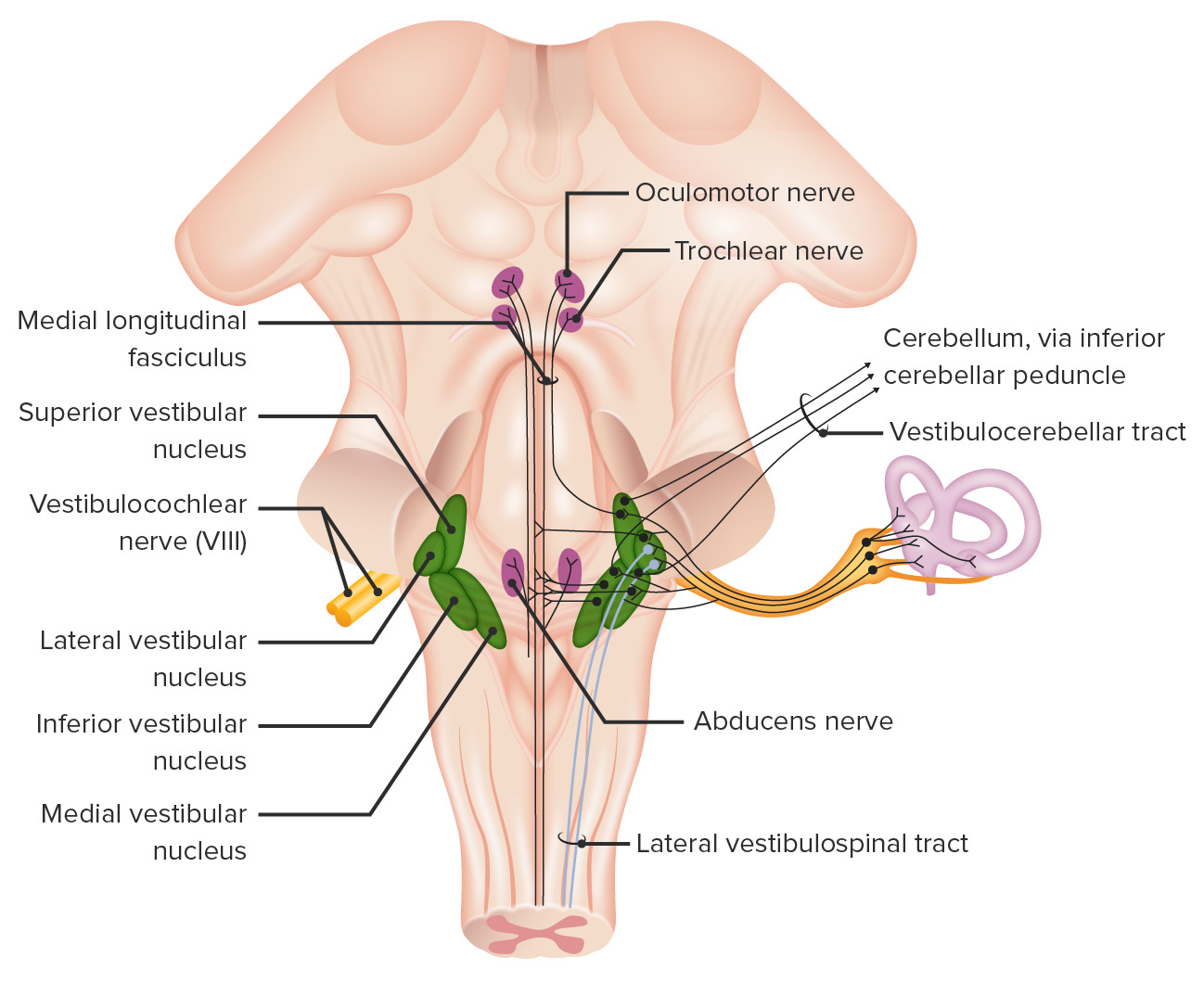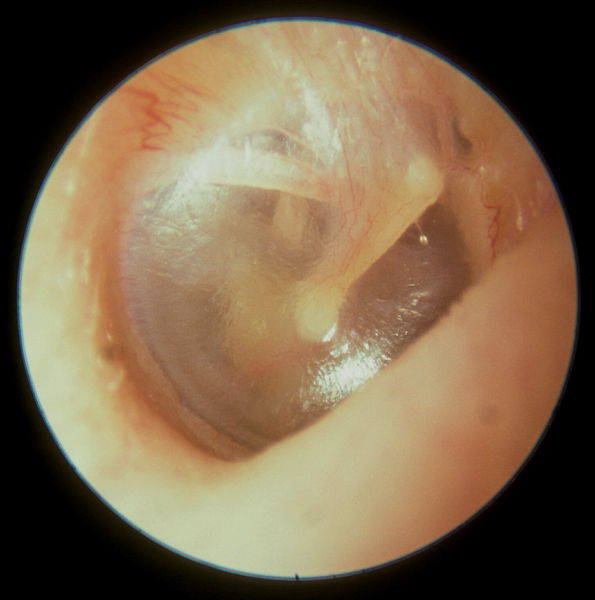Playlist
Show Playlist
Hide Playlist
Hearing Tests: Rinne Test and Weber Test
-
Slides 9 AuditorSystem BrainAndNervousSystem.pdf
-
Reference List Anatomy.pdf
-
Download Lecture Overview
00:01 Now it's time for you to think about some auditory tests. 00:06 There are two tests that can be performed to determine how intact the auditory pathway is. 00:13 One, is the Rinne test. 00:16 And the other test for you to remember, is the Weber test. 00:24 First, I want you to understand the Rinne test as an auditory test. 00:32 Here a tuning fork is going to be used to assess bone conduction and air conduction of sound. 00:41 First, the tuning fork would be placed at the mastoid process. 00:45 And that this will help you evaluate bone conduction as a practicing clinician. 00:52 From here the tuning fork would be placed near the external acoustic meatus, or the ear canal to evaluate the conduction of audition through the air. 01:07 If this is normal, air conduction time will be twice as long as bone conduction time. 01:15 When sound waves are produced by a tuning fork that is placed next to a normal ear, they travel through the air causing the tympanic membrane to vibrate and the ossicles to move. 01:25 The movement of the ossicles causes the cochlear fluid to move. 01:28 This action transforms the sound vibrations into electrical signals that are then relayed via the auditory nerve to the auditory brainstem, and the auditory cortex. 01:38 A normal ear will continue to hear the sound because air conduction is normally greater than bone conduction. 01:44 If the patient cannot hear the tuning fork after it is moved, this means that bone conduction is greater than air conduction due to something interfering the conductive component. 01:53 This is called conductive hearing loss. 01:56 Sensorineural hearing loss is due to any impairment of the auditory electrical signals from the cochlea to the auditory cortex. 02:04 In sensorineural hearing loss, both bone and air conduction are equally diminished. 02:08 So the perceived sound will disappear much earlier than usual. 02:12 Although air conduction may normally remain greater than bone conduction. 02:16 Mixed forms of hearing loss also exist. 02:19 However, if someone has conduction hearing loss, bone conduction will be greater or equal to air conduction. 02:35 If the loss is attributable to damage to the neural pathway, and this would be sensorineural loss. 02:46 And if this is the case, air conduction is going to be greater than bone conduction, but less than twice as long. 02:56 The normal would be twice as long if you have sensorineural loss. 03:01 Air conduction still going to be greater than bone conduction but will be less than twice as long. 03:09 The Weber test is another auditory test that can be performed. 03:14 Here the tuning fork once it's vibrating will be placed on the top of the middle skull. 03:24 You'll ask the patient, "Where is the sound coming from?" If everything's working normally, the patient will respond that they can hear in both ears. 03:38 If there is some pathology at play, such as conduction hearing loss, if it's unilateral, the vibration will be louder in the affected ear. 03:50 So if there is conduction hearing loss in the left ear, the vibration will be louder in the left ear because that's the one that's affected. 04:00 If there is unilateral sensorineural loss, the vibration is going to be louder in the normal ear because of the impairment in the affected ear. 04:15 This table on auditory tests allows you to make sense of the Weber test versus the Rinne test. 04:25 Normal versus abnormal. 04:28 And so if we take a look here, normal evaluation in the Rinne test which show that air conduction is greater than bone conduction bilaterally. 04:41 There should be about twice as long. 04:44 In the Weber test, the individual should be able to hear and localize the sound in both ears. 04:53 With conductive hearing loss, the Rinne test will demonstrate the bone conduction is going to be greater than air conduction in the affected ear. 05:07 Whereas, air conduction will be greater than bone conduction in the unaffected ear. 05:13 With the Weber test, conductive hearing loss will be characterized by the lateralization to the affected ear. 05:25 And then lastly, with sensorineural hearing loss with the Rinne test, air conduction is going to be greater than bone conduction in both ears. 05:36 And then the Weber test will demonstrate lateralization to the unaffected ear away from the affected ear.
About the Lecture
The lecture Hearing Tests: Rinne Test and Weber Test by Craig Canby, PhD is from the course Auditory System and Vestibular System.
Included Quiz Questions
In sensorineural hearing loss, which of the following is the most common findings?
- Air conduction is greater than bone conduction but is less than twice as long.
- Air conduction is equal to bone conduction.
- Bone conduction is greater than air conduction but is less than twice as long.
- It is difficult to measure air and bone conduction due to hearing impairment.
- Air conduction time is twice as long as bone conduction time.
Which of the following statements regarding the Weber test is most accurate?
- In unilateral sensorineural hearing loss, it is lateralized toward the normal ear.
- In bilateral sensorineural hearing loss, it is lateralized toward the right ear.
- In bilateral conductive hearing loss, it is lateralized toward the left ear.
- In unilateral conductive hearing loss, it is lateralized toward the normal ear.
- In unilateral sensorineural hearing loss, it is lateralized toward the affected ear.
In the conductive hearing loss, which of the following patterns will be seen between air conduction (AC) and bone conduction (BC)?
- BC > AC in the affected ear, AC > BC in the normal ear, and Weber lateralized toward the affected side.
- BC > AC in the normal ear, AC > BC in the affected ear, and Weber lateralized toward the affected side.
- BC > AC in the affected ear, AC < BC in the normal ear, and Weber lateralized toward the normal side.
- BC > AC in the affected ear, AC > BC in the normal ear, and Weber lateralized toward the normal ear.
- BC < AC in the affected ear, AC > BC in the normal ear, and Weber lateralized toward the affected side.
Customer reviews
3,5 of 5 stars
| 5 Stars |
|
1 |
| 4 Stars |
|
0 |
| 3 Stars |
|
0 |
| 2 Stars |
|
1 |
| 1 Star |
|
0 |
great lecture. I dont see why it is not highly rated. Thanks you
1 customer review without text
1 user review without text






